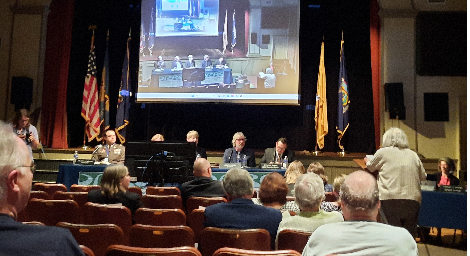Injection Wells: The Hidden Risks of Pumping Waste Underground
June 23, 2012STOP PA House Bill 1659 – A BAD DEP Permitting Bill
June 25, 2012By Josh Fox and Barbara Arrindell, TimesUnion.com, June 20, 2012
Recently, politicians and publications have conditionally endorsed so-called “safe fracking” as a part of the nation’s energy mix. But safe fracking is an impossibility, and the industry’s claims for it are knowingly based on false premises.
Chief among them is the notion that a “leakproof well” is possible. We’ve heard time again that strict regulation is the key to moving forward on fracking, and that new regulations should make sure that industry constructs leakproof wells that do not pollute the water table. There is no such thing as a leakproof gas well. The gas industry knows this; in fact, it has known it for decades.
The part of the gas well that they’re relying on to protect groundwater is simply cement: about a 1-inch-thick layer between the steel casing and the surrounding rock. Cement is permeable before it sets, subject to cracking afterward and can never be made leakproof. A 1-inch layer could never be adequate when groundwater is at risk.
The gas industry’s own documents and case studies show that about 6 percent of cement jobs fail immediately upon installation, and recent experience in the Pennsylvania Marcellus shale has borne this out over and over again.
Pennsylvania’s Department of Environmental Protection has tracked gas leaking from wells across the state. They found 6.2 percent of new gas wells were leaking in 2010, 6.2 percent in 2011 and 7.2 percent so far in 2012.
When the cement fails, it opens a pathway for gas and other toxins involved in the drilling and fracking process to migrate into groundwater and to the surface.
Cementing failure was what caused the blowout of the Macondo Well in the Gulf of Mexico, the ongoing enormous gas leak in the North Sea and contamination of groundwater onshore from Pennsylvania to Wyoming. Over the nearly four years the “Gasland” film team spent researching the issue on the ground, there was nowhere in the hundreds of cities and towns in 20 states we visited that didn’t have a significant groundwater contamination problem resulting from drilling and fracking.
The gas industry has been studying the ongoing problem for decades, and knows it full well. In a report entitled “Well Integrity Failure Presentation,” drilling service company Archer reports that nearly 20 percent of all oil and gas wells are leaking worldwide. A 2003 joint industry publication from Schlumberger, the world’s No. 1 fracking company, and oil and gas giant ConocoPhillips, cites astronomical failure rates of 60 percent over a 30-year span. Industry reports on the problem point to its persistence and the impossibility of completely preventing it.
This is technically impossible. In most cases the industry only acts to try to repair leaky wells after groundwater has been contaminated. Its track record for fixing leaks is plagued by bad planning, technical problems and mishaps. To imagine gas companies voluntarily committing to an eternity of costly maintenance on wells failing at ever-increasing rates is beyond credulity.
Nor have regulators addressed the problem with any realism. The argument that regulation can lead to “safe fracking” is senseless. To frack a well, you have to cement it, and cement inevitably fails. “Safe fracking” is a contradiction in terms.
Leaking oil and gas wells are more than statistics. Failure rates mean thousands across the nation have enough contaminants in their water and land to render them unfit for residential or agricultural use. They’re left with homes they are forced to abandon, and compromised health.
Yet we’ve almost totally failed to assess health impacts of fracking. The one study we know of is a preliminary one done in Colorado by the Colorado School of Public Health. It found a likelihood of moderate to severe health affects from drilling and fracking. Members of the New York state Legislature have joined with environmental groups to demand a full public health impact assessment before fracking is authorized here.
A health assessment is minimum due diligence when our water supply and public health hang in the balance. It’s not only the gas wells that have integrity problems; it is the oil and gas industry itself. We can believe in their self-interested assertions of leakproof wells about as much as we can expect pigs to fly. On both fronts, the only course is to rely on objective evidence.
Fox is the director of the film “Gasland.” Arrindell is the director of Damascus Citizens for Sustainability.



